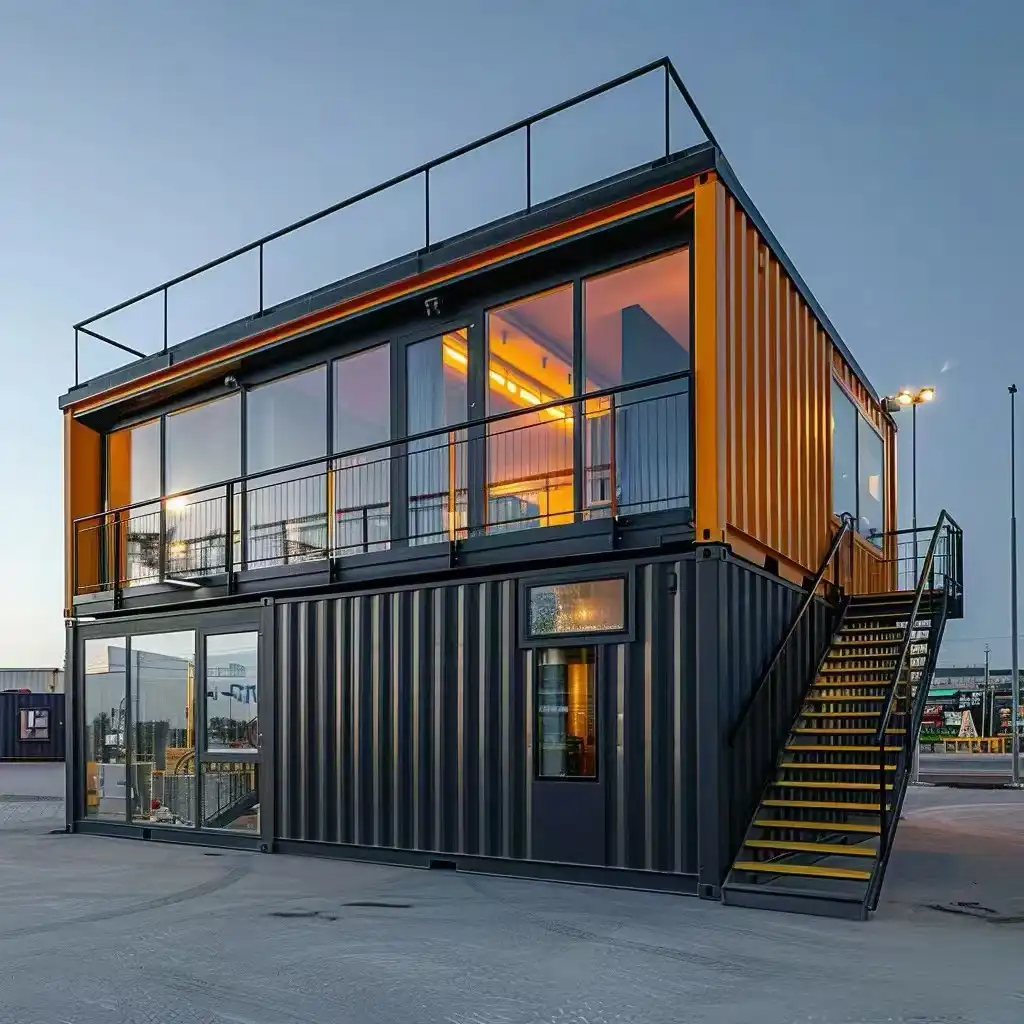The Eco-Friendly Advantages of Sandwich Panel Walls
Sandwich panel walls represent a significant leap forward in sustainable building materials. Their unique construction combines two outer layers, typically made of aluminum, galvanized steel, or stainless steel, with an insulating core. This core can be composed of various materials, including polyurethane (PU), polystyrene (EPS), or rockwool, each offering distinct environmental benefits.
The sustainability of sandwich panel walls is evident in their energy-saving properties. With thermal conductivity values as low as 0.022 W/mK for PU and 0.037 W/mK for EPS, these panels create a formidable thermal barrier. This exceptional insulation translates to reduced energy consumption for heating and cooling, thereby lowering a building's carbon footprint over its lifetime.
Moreover, the durability of sandwich panel walls contributes to their eco-friendliness. Available in thicknesses ranging from 50mm to 150mm, these panels are built to last, reducing the need for frequent replacements and minimizing construction waste. Their resistance to corrosion and ability to withstand harsh weather conditions further extends their lifespan, making them a sustainable choice for both interior and exterior applications.
Customizable and Versatile Green Solutions
The versatility of sandwich panel walls aligns perfectly with green building principles. These panels can be customized to fit specific project requirements, with widths of 1000mm or 1200mm and lengths tailored to individual needs. This customization reduces on-site waste and improves construction efficiency.
Furthermore, the aesthetic flexibility of sandwich panel walls allows architects and designers to create visually appealing, sustainable buildings. Available in various RAL colors and with PVDF coating options, these panels can be seamlessly integrated into any design concept without compromising on environmental performance.
Energy Efficiency and Thermal Performance
One of the most compelling aspects of sandwich panel walls in green building is their exceptional energy efficiency. The insulating core of these panels plays a crucial role in maintaining optimal indoor temperatures, regardless of external conditions.
The thermal conductivity of sandwich panel walls is remarkably low, with PU-core panels achieving a value of 0.022 W/mK and EPS-core panels at 0.037 W/mK. This superior insulation capability significantly reduces the energy required for heating in winter and cooling in summer, leading to substantial energy savings over the building's lifespan.
The energy efficiency of sandwich panel walls extends beyond their insulation properties. Their airtight construction minimizes thermal bridges and air leakage, further enhancing the overall energy performance of the building envelope. This comprehensive approach to thermal management contributes to creating more sustainable, energy-efficient structures.
Long-Term Cost Savings Through Energy Conservation
While the initial investment in sandwich panel walls may be higher than some traditional materials, the long-term cost savings are substantial. The reduced energy consumption translates directly into lower utility bills, offering a compelling return on investment for building owners and operators.
Moreover, the durability and low maintenance requirements of sandwich panel walls further contribute to cost savings over time. Their resistance to corrosion, weather damage, and general wear and tear means fewer repairs and replacements, reducing long-term maintenance costs and resource consumption.
Safety and Sustainability: A Dual Commitment
In the realm of green building, safety and sustainability go hand in hand. Sandwich panel walls excel in both aspects, offering fire-resistant properties alongside their eco-friendly characteristics. Panels with rockwool insulation can achieve a fire rating of up to A1, the highest possible classification, ensuring both safety and peace of mind.
The fire-resistant properties of sandwich panel walls contribute to the overall safety of buildings while also aligning with sustainable practices. By reducing the risk of fire spread, these panels can potentially minimize property damage and the need for resource-intensive rebuilding efforts in the event of a fire.
Additionally, the materials used in sandwich panel walls are often recyclable or made from recycled content, further enhancing their sustainability credentials. This commitment to using environmentally responsible materials throughout the product lifecycle demonstrates a holistic approach to green building.
Certifications and Quality Assurance
The sustainability and performance of sandwich panel walls are backed by rigorous certifications and quality control measures. Products from reputable manufacturers, such as Weifang Sandong Building Materials Co., Ltd., come with ISO, CE, UL, and FM approvals, ensuring they meet international standards for quality and environmental performance.
These certifications provide assurance to architects, builders, and building owners that the sandwich panel walls they choose will deliver on their promises of sustainability, energy efficiency, and safety. The strict testing procedures, which include comprehensive inspections of product thickness, paint film thickness, mechanical strength, flame retardancy, and product appearance, guarantee consistent quality and performance.
Conclusion
Sandwich panel walls represent a significant advancement in sustainable building materials, offering a unique combination of energy efficiency, durability, safety, and aesthetic versatility. As the construction industry continues to prioritize green building practices, these innovative panels are poised to play an increasingly important role in creating environmentally responsible structures.
By choosing sandwich panel walls, architects, builders, and property owners can contribute to a more sustainable future while enjoying the benefits of reduced energy costs, improved building performance, and enhanced safety. As we look towards a greener tomorrow, the adoption of such innovative and sustainable materials will be crucial in shaping the built environment of the future.
For more information on how sandwich panel walls can contribute to your green building project, please contact Weifang Sandong Building Materials Co., Ltd. at info@sdqsc.com. Our team of experts is ready to help you find the perfect sustainable solution for your construction needs.